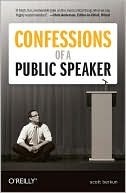More on this book
Community
Kindle Notes & Highlights
Just be glad you’re not married to someone like this — you’d never get a chance to speak at all.
Realize the audience hates these people. They’re annoying and often come off as teacher’s pets, which no one likes. The sooner you quiet them down, the happier the audience will be with you.
During a break, talk to the person in private. Thank him for his contributions, but ask him to hold off on asking more questions so others can have a chance to contribute. Give him your email as an alternative way to ask questions.
A good warning sign of this is a question that has a 60-second preamble. Whoever is asking a question this long hasn’t thought about it enough yet to even form a question.
Ask a clarifying question, “Do you mean X or Y?” Interrupt people if necessary. If they seem lost, ask them to rethink their question while you answer the next question. Then go back to them later. This is pushy, but if you do it with charm, the audience appreciates it.
There is nothing wrong with a tough question you can’t answer. There is no law that says you as the speaker must know everything.
Offer the question to the audience. Maybe you’re not the only one who can’t answer the question. If no one in the audience knows, they seem at least as dumb as you do. And if someone does know, you’ve helped the person who asked the tough question get an answer, even if it’s not from you.
Some events force you to use their lectern computer to help minimize problems, but with video codecs and font issues, this sometimes makes it worse.
PC laptops are more popular, and I’m convinced they have fewer issues with projector compatibility. Problem is, they’re PCs.
Plan B: know your core points (see Chapter 5). Be able to write them down as a short bulleted list. Do a shorter, less formal version of your talk. Don’t constantly say, “If I had my slides” or “In my real presentation….” The audience doesn’t care about what they might have seen.
The web, blog, and Twitter world has made everyone much more forgiving of bad spelling and punctuation. If a typo is your biggest mistake, you’ve done very well.
Thank whoever caught it and make a note to fix the mistake. Then move on.
Get there early. Fly in the night before. Do not assume the travel world works perfectly, because it never does.
When you do arrive, no matter how late you are, take a moment to reset yourself. If you are frantic and panicked, you can’t possibly do a good job.
Before you close, offer to stay late for anyone who has follow-up questions. It’s a good habit anyway, but this might mitigate people’s gripes about your late arrival.
If you build your presentation right, there should be a steady rhythm throughout the talk that informs you of your pace every step of the way (see Chapter 6).
Put your slides in three places: on a flash drive you bring with you, on your own laptop, and on a website you can access from any web browser. Redundancy wins.
The simple trick is to make a list of 10 questions at the start of your talk, pulled live from the audience, and answer each question in turn. What do they expect to learn? This may turn out to be much better material than what you had planned.
A decent compromise is to use the title slide from their template but nothing else.
Simply strike out the offending clauses, initial them, and return the contract, mentioning what you did. This is often perfectly acceptable.
If they insist on video or audio recording, demand a Creative Commons license so you can reuse that recording yourself.
Twenty-five-year-old Leonard Susskind was asked to give a talk at the Institute for Advanced Study at Princeton University. In the front row were J. Robert Oppenheimer, Nobel Laureate T. D. Lee, and many other notables. Susskind was young and terrified, and responded by being overly aggressive and defensive. It was 1965, and at that time they used opaque projectors, which were sandwiched between glass and projected by a bright light on a screen. Famous physicist Marvin Goldberg asked a question, and in trying to answer, Susskind got his red tie stuck in the projector he was using to give the
...more
“You see, you don’t have to be a techie to understand even the more complicated programs, you just have to know how to explore.” Then an audience member piped up, “No, but it helps if you’re a Trekkie!” I noticed the sound guy trying not to fall over laughing offstage. He pointed to me, then pointed to his chest. I glanced at the video screen behind me to discover that the shirt I had hastily dressed over was clearly showing off its main graphic — a yellow and black Star Trek communicator — right through my blouse. — Cassandra


